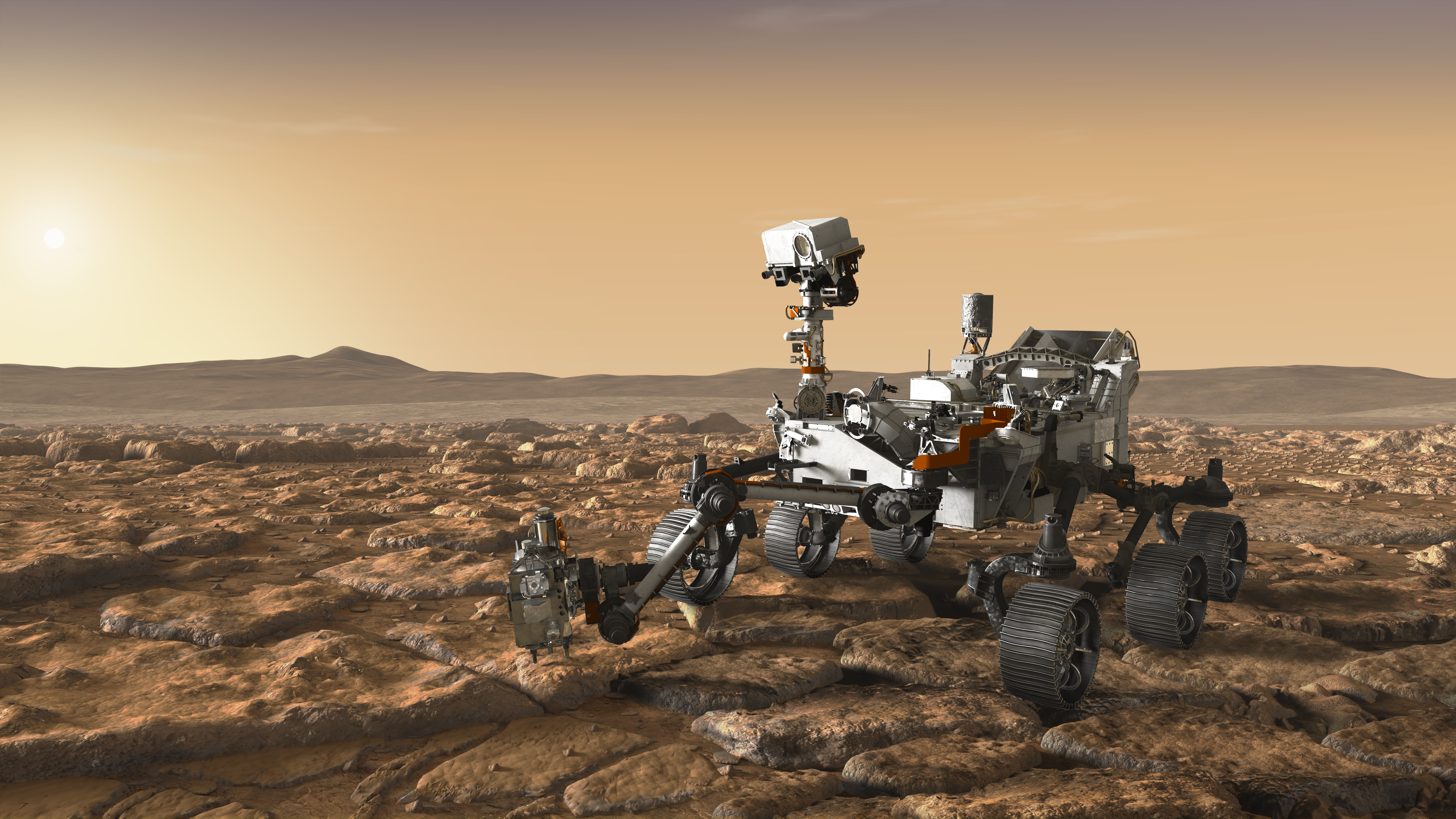
An artist’s rendering of the Mars 2020 rover. NASA/JPL-CALTECH
In 2021, a NASA rover will touch down on Mars in search of signs of life, past or present. It will investigate the surface of the red planet and collect samples from areas that seem particularly promising. But traces of life on Mars—if they exist—aren’t going to be apparent to the naked eye: Obviously there’s no remains of mammoths or goldfish or snails. Any record of life on Mars would likely take the form of organic compounds, which have already been identified up there but aren’t definitive, or actual fossils of microorganisms. Such fossils exist here on Earth, but they’re very tricky to spot—even in places we know they’ll be. The best strategy for finding these miniscule traces, according to a group of Scandinavian scientists, is to study the denizens of the deep sea. This team now plans to create an atlas of fossilized microbes from Earth’s oceans—an extraterrestrial field guide of sorts—to help the rover and its human partners identify definitive proof of life on Mars, according to their recent article in Frontiers in Earth Science.

